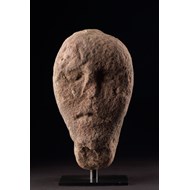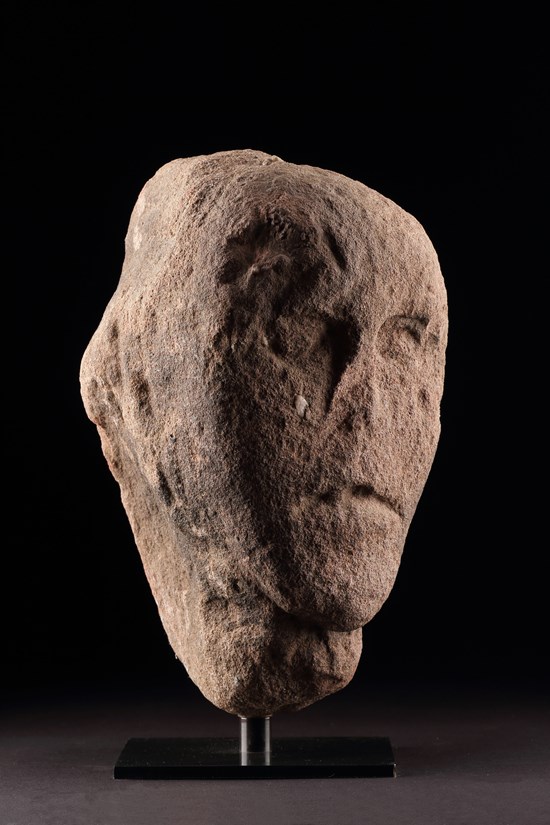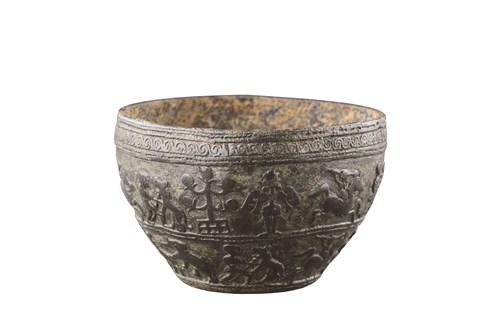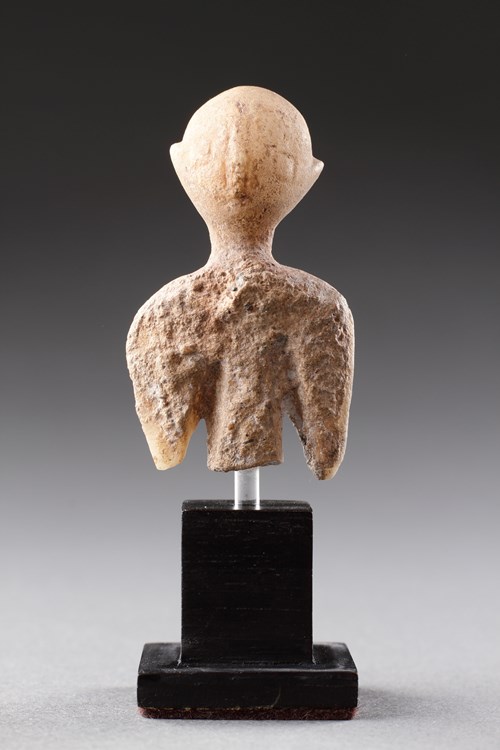Ancient British Celtic Red Sandstone Head of a Deity
An Ancient British Celtic Red Sandstone Head of a Deity Perhaps from a Shrine with Oval Eyes and Downturned Slit Mouth
Traces of fossilised shell in the stone
1st Century B.C – 1st Century A.D
Size: 32cm high, 17cm wide, 19cm deep - 12½ ins high, 6¾ ins wide, 7½ ins deep / 35cm high - 13¾ ins high (with base)
Traces of fossilised shell in the stone
1st Century B.C – 1st Century A.D
Size: 32cm high, 17cm wide, 19cm deep - 12½ ins high, 6¾ ins wide, 7½ ins deep / 35cm high - 13¾ ins high (with base)
An Ancient British Celtic Red Sandstone Head of a Deity Perhaps from a Shrine with Oval Eyes and Downturned Slit Mouth
Traces of fossilised shell in the stone
1st Century B.C – 1st Century A.D
Size: 32cm high, 17cm wide, 19cm deep - 12½ ins high, 6¾ ins wide, 7½ ins deep / 35cm high - 13¾ ins high (with base)
Traces of fossilised shell in the stone
1st Century B.C – 1st Century A.D
Size: 32cm high, 17cm wide, 19cm deep - 12½ ins high, 6¾ ins wide, 7½ ins deep / 35cm high - 13¾ ins high (with base)
The human head had an overwhelming significance to all Celtic people. The head symbolised divinity itself and was the possessor of every desirable quality. As the centre of spiritual power it was a conspicuous recurring image in their rituals, warfare and mythology. The head appears in their art from the earliest known representations in Central Europe to the illuminated manuscripts of the Christian Irish. The Celts were headhunters, but their collecting of these trophies was not just to boast of their valour and prowess, they believed a protective power resided in them. Stone heads were often sculpted as offerings and placed in sacred springs, bogs and rivers where the gods resided. Extensive archaeological evidence shows these sites to be particularly favoured for votive offerings, but it has also been shown that the Celts constructed permanent shrines of timber and other ritual enclosures where the gods could be propitiated.
Ex Private UK collection acquired London Art Market early 1980’s
Ancient British Celtic Red Sandstone Head of a Deity









YOU MAY ALSO LIKE



